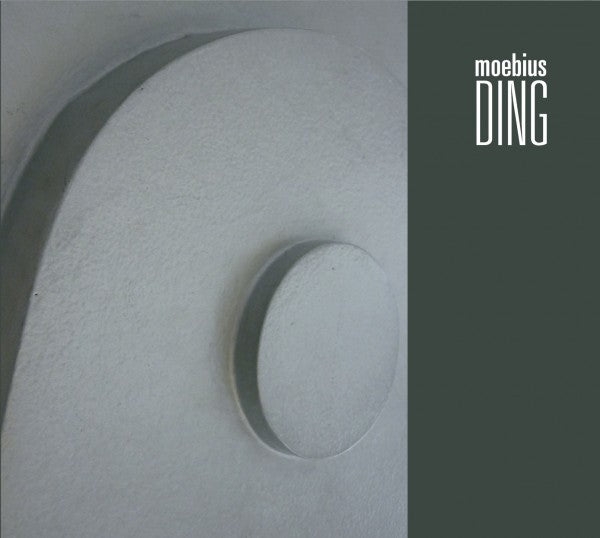1
/
of
1
MOEBIUS, DIETER - Ding
Regular price
$28.00 USD
Regular price
Sale price
$28.00 USD
Quantity
Couldn't load pickup availability
Dieter Moebius - one half of the legendary duo Cluster and the godfather of electronic krautrock - passed away in the summer of 2015. Bureau B are reissuing his final four solo albums. Following on from Blotch (BB 209CD/LP) and Nurton (BB 210CD/LP), reissued in 2016, Kram (BB 258CD/LP) and Ding now complete the quartet. Liner notes were penned by Moebiuss friend, the U.S. composer, producer, and musician Tim Story. Ding was originally released in 2011.\r\n
\r\nTim Story on Ding: If Dieter Moebius previous album Kram was an irreverent m_ɬ©lange of bright synthetic textures, 2011s Ding might be considered Moebis industrial album. There is a cyclical, mechanical feel to many of the pieces here -- but this is light industry, not heavy machinery. Small, discrete contraptions churn out curious objects as the listener strolls the factory floor, the combinations evolving as perspectives shift with each step taken. Moebi made extensive use of a relatively portable sample recorder/looper during the creation of Ding, and the freedom to capture random bits of sound in the natural (or unnatural) world must have been inspiring. These organic ambiences might have evoked a terrain that feels familiar, except of course that this is a Moebius album. Angular rhythms, disembodied voices, repeated loops of audio debris all combine to forge a facsimile of reality that is wonderfully peculiar. The earthy environments of Ding give it a remarkable depth of field, and Moebi masterfully allows a great deal of transparency in the mixes. The smallest of musical cues -- the alternating, faraway chords which float through Bone, for example -- are sufficient to tie the seemingly disparate elements together into a satisfying, truly musical experience. The strands of natural, mechanical, and electronic sounds are so deftly juxtaposed that music never quite overwhelms noise, and the clamor is never allowed to stifle Dings strange poetry. Altogether, Ding feels like something of a small revelation -- theres liberation in Moebis willful escape from a sound palette confined solely to his synthesizers. If the notion of manipulated, overlapping field recordings sounds dry and abstract, Ding is anything but. In places, the loping, syncopated pulses suggest the polyrhythms of African music, even funk -- but its a state which never quite materializes because the rhythm loops are almost always trimmed slightly too long or too short, deliberately interrupting the groove that otherwise could have taken hold. So its music you might conceivably dance to, if your legs arent quite the same length. Mentally, its much easier to dance with Ding. Shot through with Moebis humor and extraordinary imagination, its provocative choreography of music and noise remains one of his most seductive." - Bureau B.
View full details
\r\nTim Story on Ding: If Dieter Moebius previous album Kram was an irreverent m_ɬ©lange of bright synthetic textures, 2011s Ding might be considered Moebis industrial album. There is a cyclical, mechanical feel to many of the pieces here -- but this is light industry, not heavy machinery. Small, discrete contraptions churn out curious objects as the listener strolls the factory floor, the combinations evolving as perspectives shift with each step taken. Moebi made extensive use of a relatively portable sample recorder/looper during the creation of Ding, and the freedom to capture random bits of sound in the natural (or unnatural) world must have been inspiring. These organic ambiences might have evoked a terrain that feels familiar, except of course that this is a Moebius album. Angular rhythms, disembodied voices, repeated loops of audio debris all combine to forge a facsimile of reality that is wonderfully peculiar. The earthy environments of Ding give it a remarkable depth of field, and Moebi masterfully allows a great deal of transparency in the mixes. The smallest of musical cues -- the alternating, faraway chords which float through Bone, for example -- are sufficient to tie the seemingly disparate elements together into a satisfying, truly musical experience. The strands of natural, mechanical, and electronic sounds are so deftly juxtaposed that music never quite overwhelms noise, and the clamor is never allowed to stifle Dings strange poetry. Altogether, Ding feels like something of a small revelation -- theres liberation in Moebis willful escape from a sound palette confined solely to his synthesizers. If the notion of manipulated, overlapping field recordings sounds dry and abstract, Ding is anything but. In places, the loping, syncopated pulses suggest the polyrhythms of African music, even funk -- but its a state which never quite materializes because the rhythm loops are almost always trimmed slightly too long or too short, deliberately interrupting the groove that otherwise could have taken hold. So its music you might conceivably dance to, if your legs arent quite the same length. Mentally, its much easier to dance with Ding. Shot through with Moebis humor and extraordinary imagination, its provocative choreography of music and noise remains one of his most seductive." - Bureau B.


